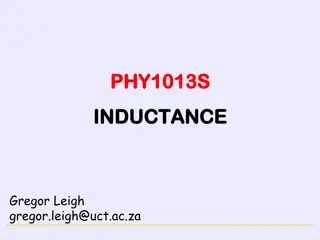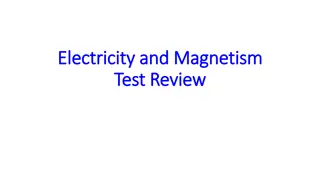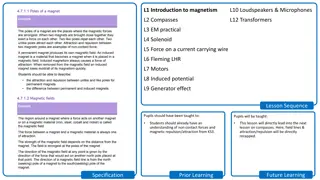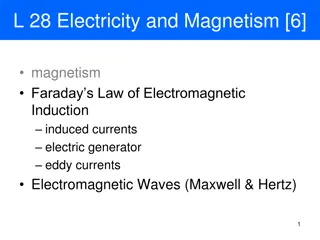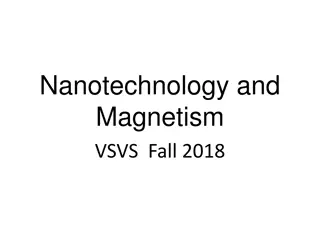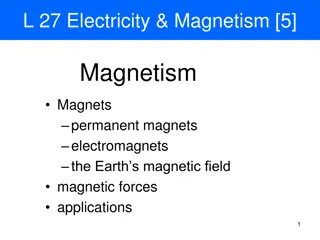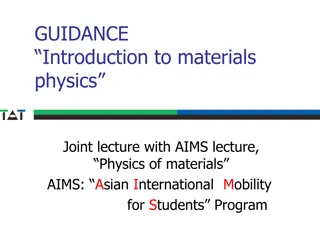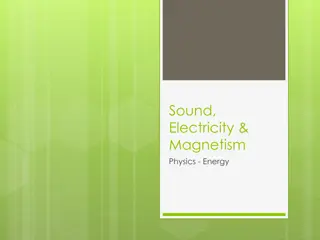Exploring Physics Concepts: Circuits, Magnetism, and Inventors
Delve into the world of physics with topics like series and parallel circuits, magnetism activities, and a research project on inventors Thomas Edison and Nikola Tesla. Discover how to make a magnet, understand the basics of electric circuits, and learn about the fascinating lives of these pioneering minds in science.
Download Presentation

Please find below an Image/Link to download the presentation.
The content on the website is provided AS IS for your information and personal use only. It may not be sold, licensed, or shared on other websites without obtaining consent from the author. Download presentation by click this link. If you encounter any issues during the download, it is possible that the publisher has removed the file from their server.
E N D
Presentation Transcript
Physical Science Physics Series and Parallel Circuits & Magnetism
A series circuit The total resistance of a series circuit is equal to the sum of the individual resistances. Christmas lights
A parallel circuit Can unscrew one light and the other 2 still are lit. http://www.cdn.sciencebuddies.org/Files/4889/7/parallel-circuit-diagram_img.jpg
Activity making a Magnet How to make a Magnet Get one 4 nail 5 feet of thin copper wire Wrap the wire around the nail, leaving 2 at each end Use the sand paper to scrape the insulation off the ends. Attach the ends of the copper wire to each end of the battery. Place a rubber band around the ends of the terminals of the battery to hold the copper wires in place. Try and pick up the paper clips. How many can you pick up?
Adult Ed Project Research Thomas Edison & Nikolas Tesla .5 Credits Who were Thomas Edison & Nikolas Tesla? How did they meet? What did they invent &/ or develop? Together or separately? What challenges did they have to overcome? How did there friendship/ business relationship end? How would the world be different without them?
pHET Electric Field
Works Cited Gonick, Huffman; The Cartoon Guide to Physics, 1990, Page 95 195. Merrill; Physics Principles & Problems,1992, p.468 486 & 490 509.




